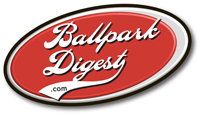With plans to revive LaGrave Field and the Fort Worth Cats taking shape, backers believe an emphasis on family entertainment will be crucial to make the endeavor a success.
On Tuesday, the Tarrant Regional Water District board of directors voted to approve a lease agreement with the Save LaGrave Foundation, a non-profit led by Scott Berry, a former owner of multiple independent American Association teams. The plan calls for the foundation to invest at least $1.5 million in capital improvements over the next 18 months, followed by another $1.5 million in upgrades over the ensuing 18 months. Renovations will make the shuttered LaGrave Field operational again for an independent league team, which could begin play as early as 2020, and other events.
In planning for the revived LaGrave Field and the team it will accommodate, Berry recognizes that the gameday experience will need to be focused on more than just baseball. Successful independent-league teams such as the St. Paul Saints (American Association) have built their operations on a model that emphasizes family entertainment through promotions and other in-game elements, and the plan is to emulate that strategy in Fort Worth. More from the Fort Worth Star-Telegram:
“If we had said “come out and watch great baseball” we would have failed years ago,” said Sean Aronson, a vice president and broadcaster for the St. Paul Saints, possibly the most successful independent franchise. “If you want to go see the best baseball, go watch the Twins. That’s not what we are.”
Scott Berry, a former Cats executive, hopes his Save LaGrave Foundation can pump new life into the decaying LaGrave Field with the Cats as the cornerstone. This week the foundation reached a 10-year agreement with Tarrant Regional Water District that secures the field for baseball and not redevelopment for the time being.
“It’ll be a production,” he said of game night in a remodeled LaGrave. “Every night will be an event.”
Plans to revive LaGrave Field were helped by a land swap, as Houston-based Panther Acquisition Partners swapped the 8.1 acre site hosting the ballpark for a larger, 14.2-acre site that was controlled by the Tarrant Regional Water District. As part of its agreement with the water district, the foundation will make a $1.75 million upfront, 10-year rent payment, while lease payments would go to $14,500 monthly in year 11.
We took a closer look at the long and unique history of LaGrave Field last year, including the story behind the original iteration that was constructed in 1926 and how it was reborn in the early 2000’s after being rebuilt by local businessman Carl Bell. Though the original ballpark had been torn down in 1967, the job was done on the cheap, so the original dugouts and walkways were still there, buried under some rubble. (They were occupied mainly by snakes — a challenge to the crew digging them out.) Early on the decision was made to keep the original dugouts, but they were converted into unique seating areas with their own entrances. Bell eventually lost control of the ballpark and sold it to his lender. It has changed hands since, but has not been active in recent years, leaving its condition to deteriorate.
Image of LaGrave Field from when it was operation courtesy Save LaGrave Foundation.
RELATED STORIES: LaGrave Field Agreement Could Pave Way for Cats Return; Funding Key to Reviving LaGrave Field, Fort Worth Cats; Talk About Nine Lives: Fort Worth Cats Home Could Return; LaGrave Field Suffering Through Years of Neglect; Sale of LaGrave Field finally goes through; Bell files bankruptcy, preventing LaGrave Field foreclosure

